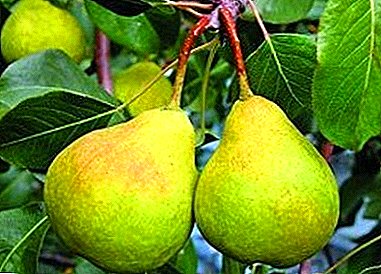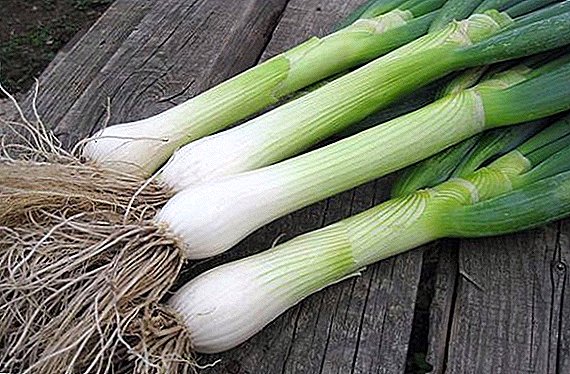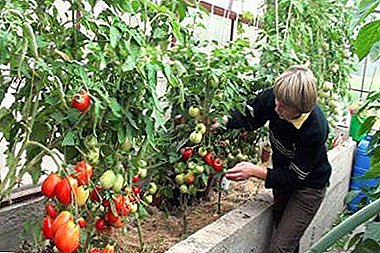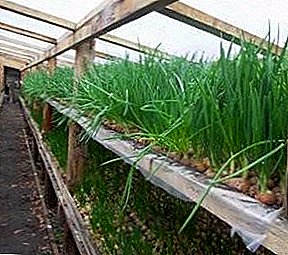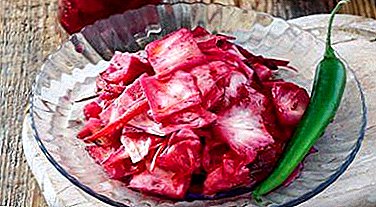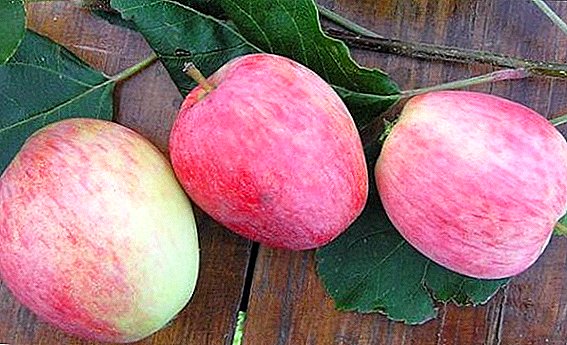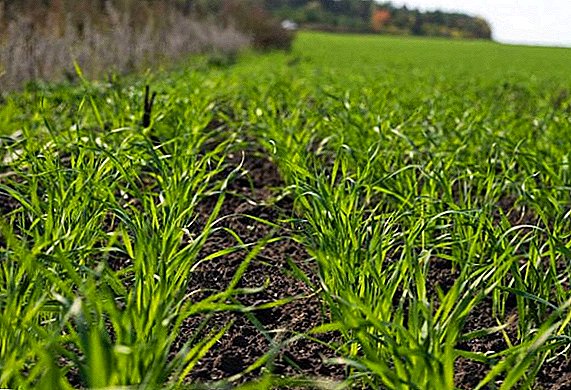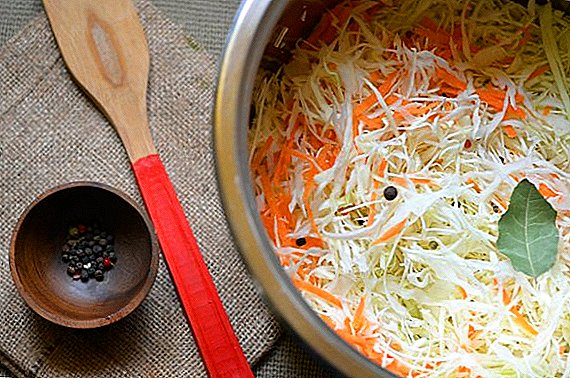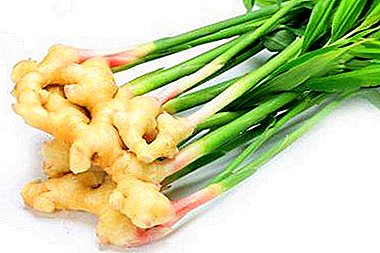
Ginger is an exotic plant that has become part of our lives. It is already difficult to imagine a pastry delicacy or meat culinary masterpiece without this spice.
It turns out that this root is easy to grow with your own hands, even in the country or in the garden in any way, including when it has already started processes.
Read what will happen to the plant when planting in various ways. The article will tell you how to plant ginger seeds, roots and sprouts sprouted store roots.
Is it possible to grow in open ground?
Homeland ginger is India, a country with a tropical and subtropical climate. Naturally that root can grow at high temperatures and high humidity. Similar conditions on the plot in the open ground can be provided only in the southern regions of Russia.
In northern latitudes, cultivation is also possible, but in greenhouses or on a windowsill, which will prolong the growing season of the plant.
Outdoor varieties
Currently, there are about a thousand varieties of spices. They all differ in type of inflorescence, in flower color, but the taste is slightly different. But traditionally distinguish the following types of ginger:
| Title | Description | pros | Minuses |
| Jamaican | Widely used in cooking, being the main component of many dishes and drinks. | Possesses the most delicate and fresh aroma. | Fibrous structure |
| Australian | Widely used in the confectionery industry. | It has a pronounced lemon note and a sweetish taste. | Fibrous structure |
| African | Used for the preparation of essential oils and perfumes | Strong spicy taste | Sharp and persistent aroma |
| Indian | Used in cooking, confectionery, in medicine | Pleasant taste with lemon notes | Fibrous structure |
| Chinese | Used in medicine and cooking, has a soft and supple structure | Pleasant spicy taste | Contains an increased percentage of nitrogen dioxide |
When to land in the country?
 The period of ripening of ginger root is 8 - 10 months. Therefore, in order to harvest the root crops planted on the open ground, in September - October, it is necessary to plant ginger in late January - early March.
The period of ripening of ginger root is 8 - 10 months. Therefore, in order to harvest the root crops planted on the open ground, in September - October, it is necessary to plant ginger in late January - early March.
A more precise planting time should be determined taking into account the geographical latitude: in the south of the country, the crop can be harvested in October - November, therefore, the plant should be planted in March, and in the central part - only in January - February, since the first frosts will not allow "plant in open ground until October.
Residents of these regions can do otherwise: with the onset of cold, dig the root together with the earthy clod and plant it in a barrel or other bulk container, transfer it to a warm room and continue the spice growing season until the next spring.
How to do it right?
- Prepare inventory. For planting ginger in open ground, you will need a shovel, a watering can, and for sowing seeds and for germinating a root crop, you will need containers: an 8–10 cm tall container and not a deep, but a wide pot. All containers must be disinfected by wiping them with a sponge moistened with alcohol.
- Choose a place. For ginger, a place protected from the wind and a well-lit place is suitable, but without direct sunlight (if this is not possible, it is necessary to provide shading in the midday heat). Well, he will feel himself in the penumbra, where the soil is constantly in a slightly moistened state, but the proximity of groundwater to the surface should be excluded.
- Land preparation for landing. The root will need loose, nutritious, breathable and drained soil. Most often gardeners mix 2 parts of leaf humus, 1 part of sand, 1 part of peat and 1 part of sod land. It is possible when digging the site for the winter in the ground to make mineral fertilizers and rotted manure.
- Planting material. The main method of reproduction of ginger is rhizome division. You can buy ginger root crops in the garden center or an online store selling only certified products. When buying a root in a store, there is a great risk that it will not germinate. When purchasing a root crop, one should pay attention to its appearance (fresh, smooth, elastic, glossy, golden brown), the presence of "eye" (shoots of buds), the absence of any defects.
The average price for a root vegetable of ginger in Moscow is from 200 rubles per kilogram, in St. Petersburg - from 240 rubles per kilogram.
Seed propagation is a long and laborious process. Quality seeds are almost impossible to find, but sometimes they can be found in specialized or online stores. Pricing policy: Moscow - from 140 rubles for 10 seeds, St. Petersburg - from 150 rubles. for 10 seeds.
Landing
Seed propagation
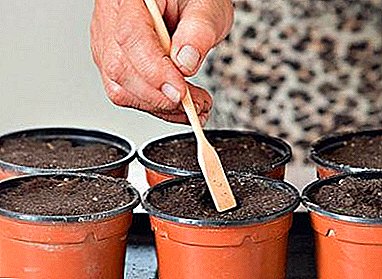 For sowing seeds will need: shallow wide tank (8 - 10 cm), soil, drainage, film (glass), seeds, spray.
For sowing seeds will need: shallow wide tank (8 - 10 cm), soil, drainage, film (glass), seeds, spray.- Soil and seeds should be disinfected: process the soil thermally (30 minutes in the oven at + 180 ° C - + 200 ° C), soak the seeds for 30 minutes in a solution of Fitosporin.
- At the bottom of the tank fill the layer (1 cm) of drainage, then - the ground.
- The soil is well moistened with an atomizer.
- On the surface of the substrate should be distributed ginger seeds at a distance of 3 to 5 cm, lightly sprinkle with soil or sand (not more than 0.5 cm).
Reproduction by root tubers
- It is necessary to prepare: root crop, pot (shallow, but wide), soil, knife, potassium permanganate, activated carbon (ash), drainage, sand.
- Kornekluben must be disinfected by washing it with a solution of potassium permanganate (1 gram per 100 ml of water) or soak in a weak solution of Fitosporin for 30 minutes, heat the potting soil or shed with fungicides.
- Parts of the root for the night should be immersed in warm water to "wake up" the kidneys.
- For germination, the root can be put in a plastic bag and put in a bright place.
- The root crop already with germinated “eyes” must be cut into segments (5–8 cm), each of which must contain at least 2 buds (eyelets).
- Cut areas must be treated with wood ash or sprinkled with powdered activated carbon.
- The pot must be filled with drainage (1/3 volume) and soil (2/3 volume).
- The root (shoots up) is sunk by half, then completely covered with earth (2 -3 cm), the upper layer of which is rammed by hand. Liberally pour.
We offer you to watch a video about reproduction of ginger by root and tubers:
Rooting germinated store plants
Consider whether it is possible to plant the root if it has already sprout, and how to do it correctly.
- It is necessary to prepare a plant, a shovel, a watering can, drainage, sand.
- In spring, the germinated plant is transferred to the open ground. A two-centimeter drainage layer (expanded clay, gravel, etc.) and a two-centimeter layer of coarse sand should be poured into the excavated landing hole (20 cm), and then the substrate layer can be filled.
- Soil in the hole must be well shed. Let the water soak in.
- The plant is transplanted along with an earthy ball.
- The resulting voids are covered with soil, gently pressing it against the barrel for fixation.
Primary care
For shoots
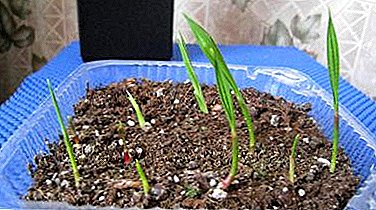 After sowing, the container should be tightened with a film (close with glass) and placed in a bright and warm place (+ 23С - + 25С).
After sowing, the container should be tightened with a film (close with glass) and placed in a bright and warm place (+ 23С - + 25С).- Polyethylene needs to be opened daily for airing and irrigation from a substrate sprayer.
- After the emergence of seedlings (after 2 - 4 weeks), the film is removed, the seedlings are regularly watered (once every 1-2 days) and shading in case of bright sunshine.
- With the advent of the first true leaf, it is necessary to make a pick, spreading seedlings in individual pots.
In a pot
- After planting the pot should be placed in a warm place (not below + 20C). The place should be bright, but without direct sunlight, so the south window will not work.
- Watering is carried out regularly, the top layer of soil should always be in a moist condition, but stagnant water should not be allowed.
- A week before the planned planting in the open ground, the seedlings should be “hardened”: first take out to fresh air for 1.5 hours, then - for 5-6 hours.
In the open ground
- The first time after planting ginger in open ground watering should be carried out frequently, but at the same time, avoiding the "waterlogging" of the soil. As soon as the plant is applied, the frequency of watering can be reduced, but the soil should not dry out.
- Well, if after each moistening of the root, loosening will be made (depth 1 cm).
- When the height of the plant reaches 20 cm, then it is necessary to pile it up; This procedure must be repeated every 10 to 12 days.
- Ginger likes an increased level of air humidity, so the plant must be irrigated daily in the early morning or evening.
- During the entire growing season, the root crop needs feeding. Immediately after planting every 10 days, it can be added with mullein (1:10), and in the second half of the summer it is advisable to begin to apply fertilizers rich in potassium and phosphorus (potassium magnesia, superphosphate, wood ash) for the active formation of tubers.
- Part of the root left in the ground for the winter (only for residents of the south of the country) must be mulched and insulated, covered with agrofibre.
Errors in the process
Ginger is quite whimsical: there can be problems with it in case of non-compliance with the requirements for the place where the root will grow, the composition of the soil, the irrigation scheme and under the condition that there are no disinfection measures. As a result of these factors the plant may rot, dry out or be affected by infectious diseases. To prevent this from happening, you should strictly follow all the recommendations given in the article above.
It is necessary only once to plant ginger on your site, and you can “get sick” with this spice in a good sense of the word. Do not be afraid to experiment!


 For sowing seeds will need: shallow wide tank (8 - 10 cm), soil, drainage, film (glass), seeds, spray.
For sowing seeds will need: shallow wide tank (8 - 10 cm), soil, drainage, film (glass), seeds, spray. After sowing, the container should be tightened with a film (close with glass) and placed in a bright and warm place (+ 23С - + 25С).
After sowing, the container should be tightened with a film (close with glass) and placed in a bright and warm place (+ 23С - + 25С).